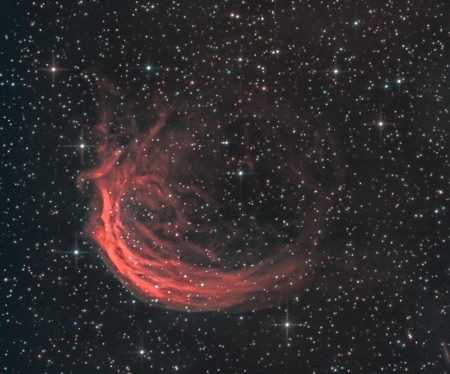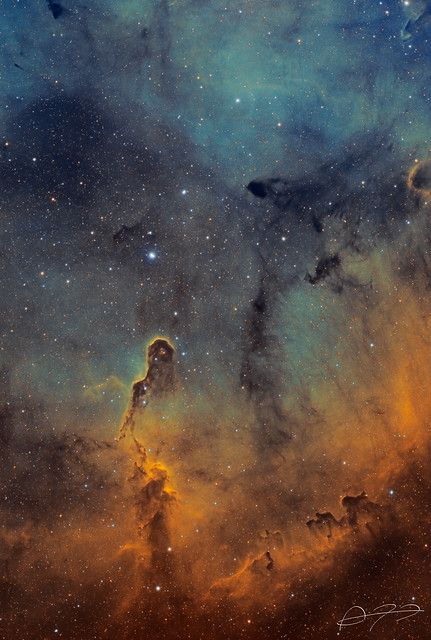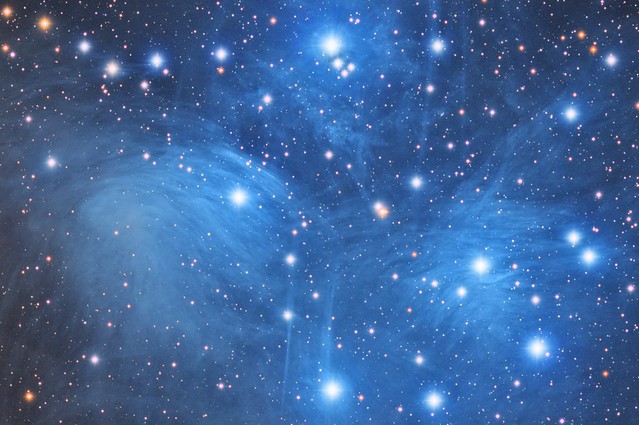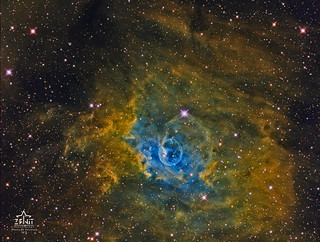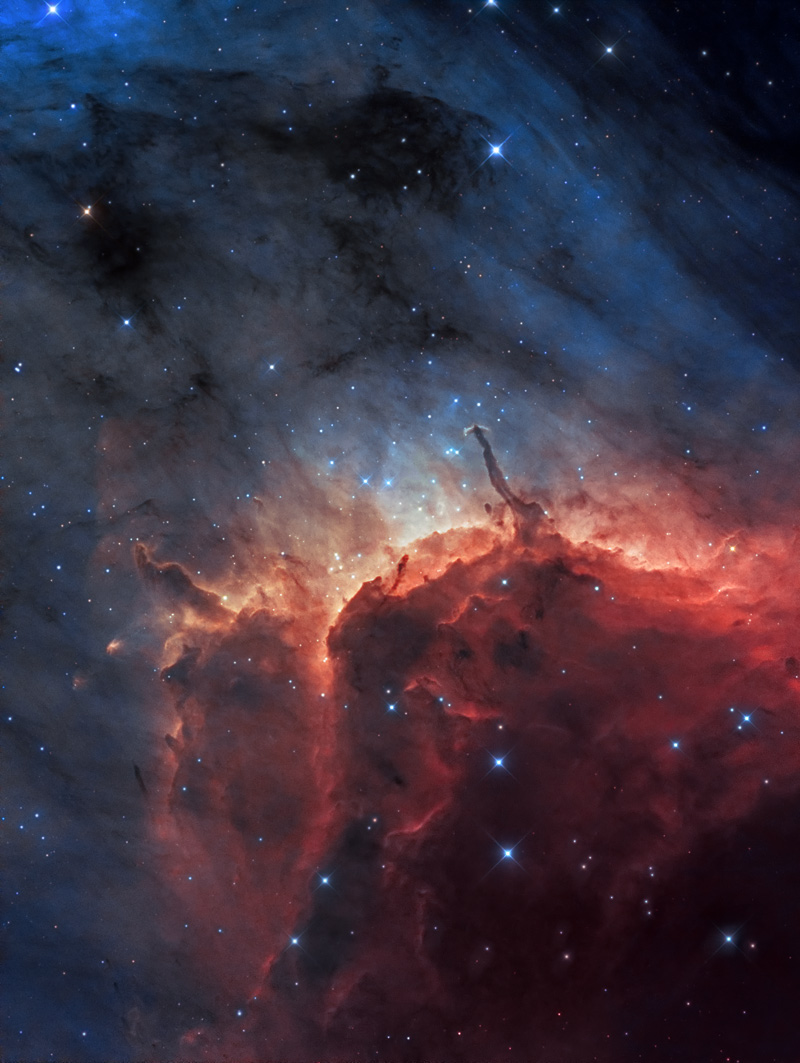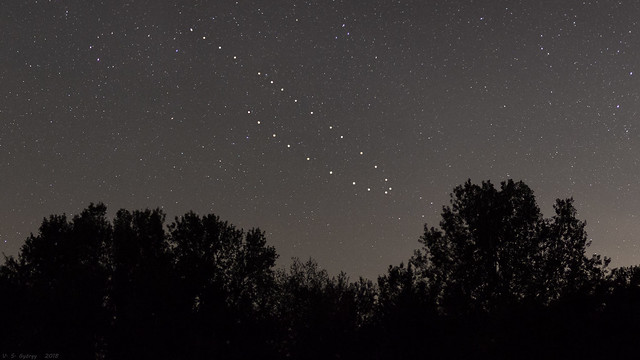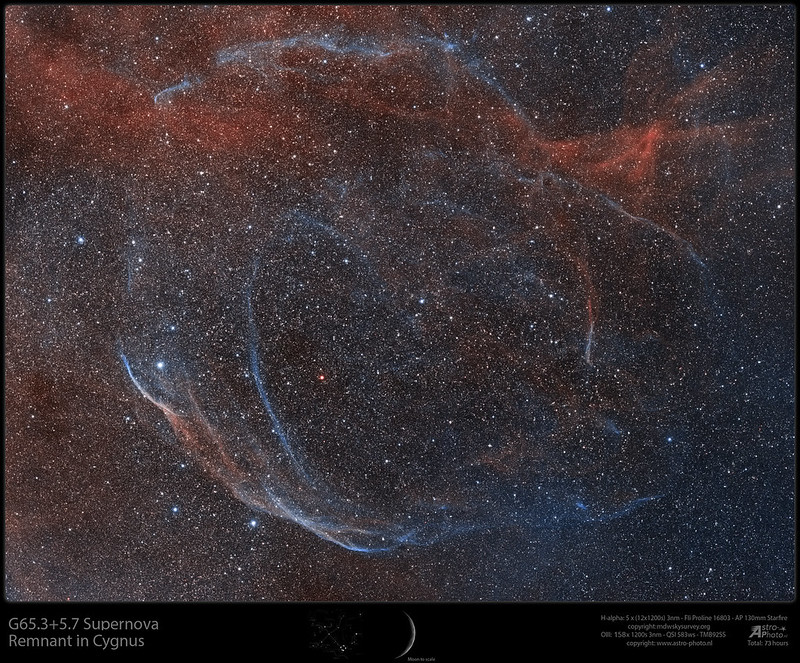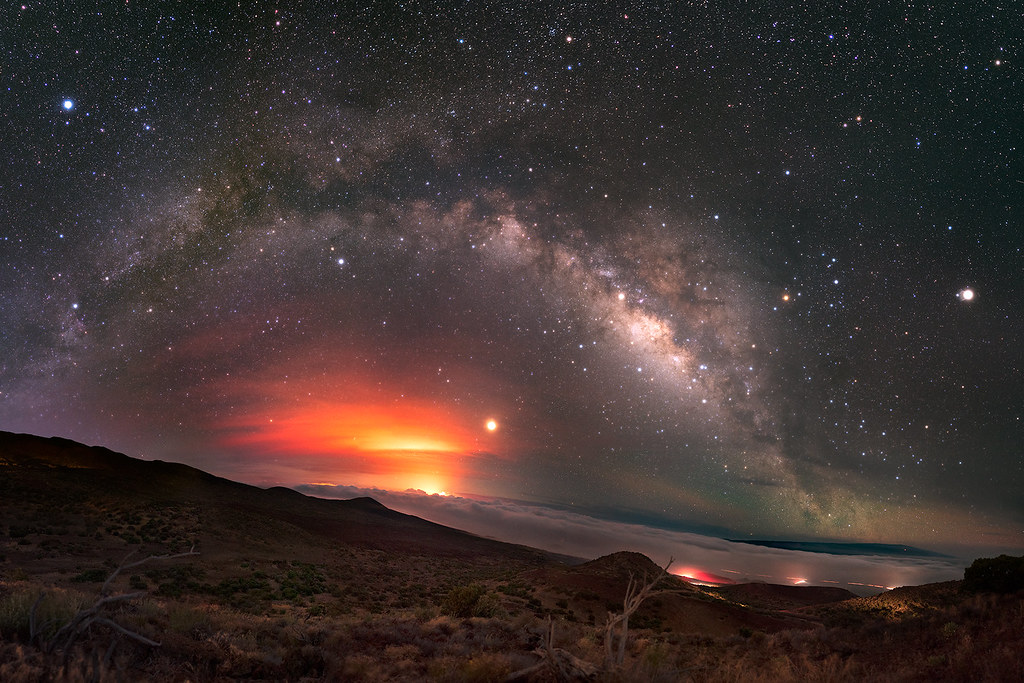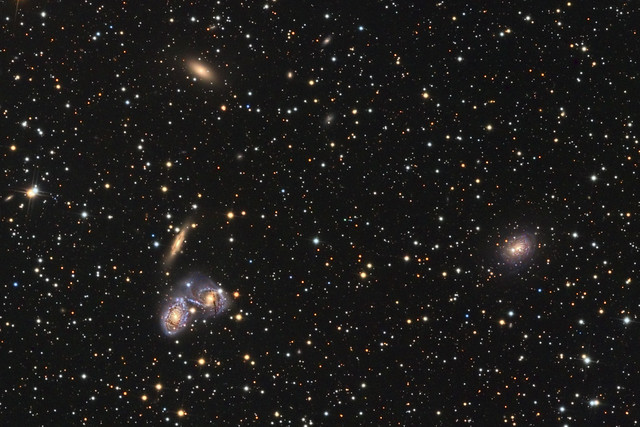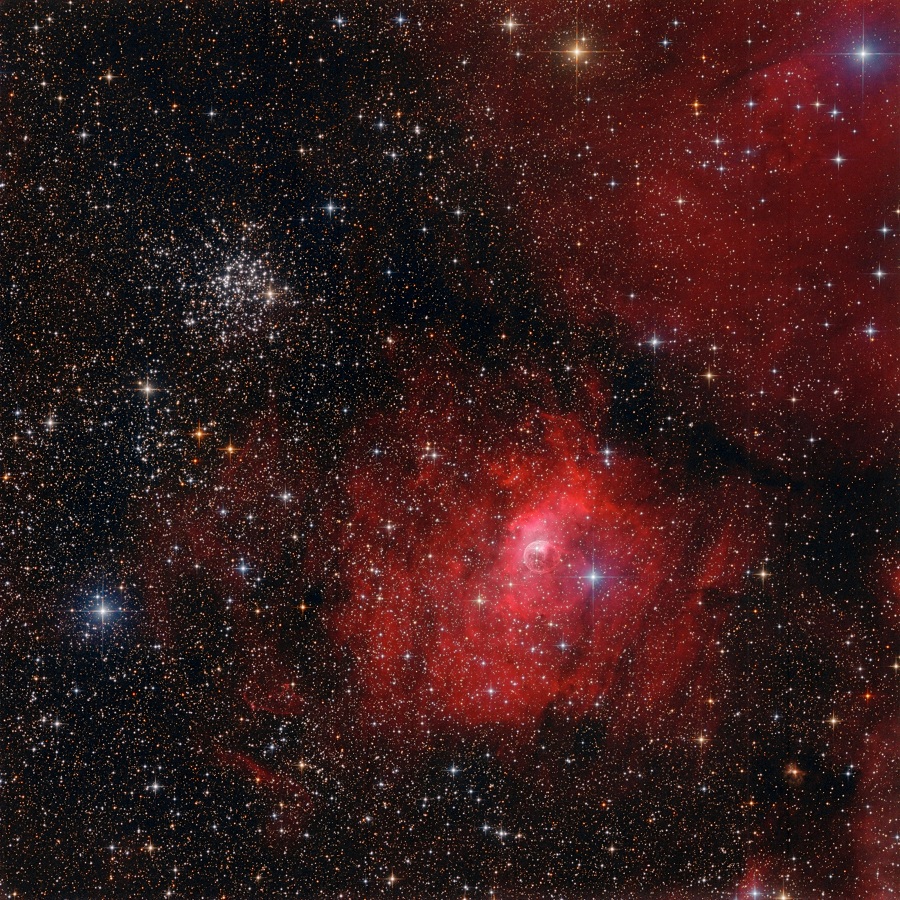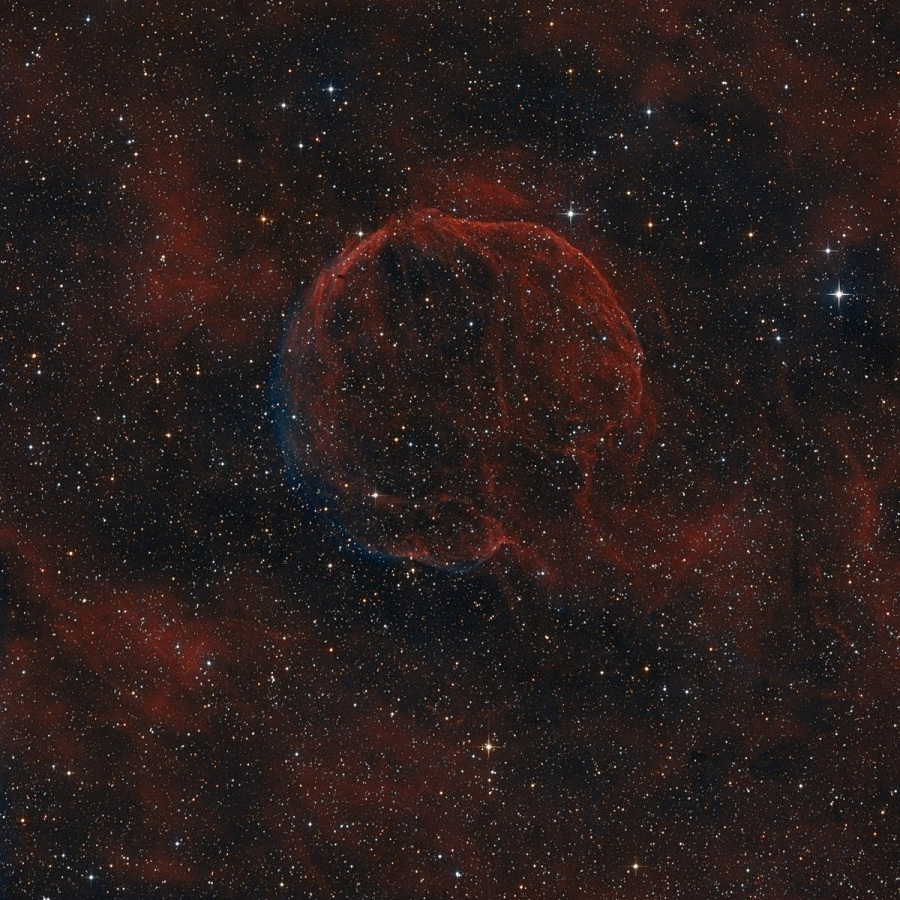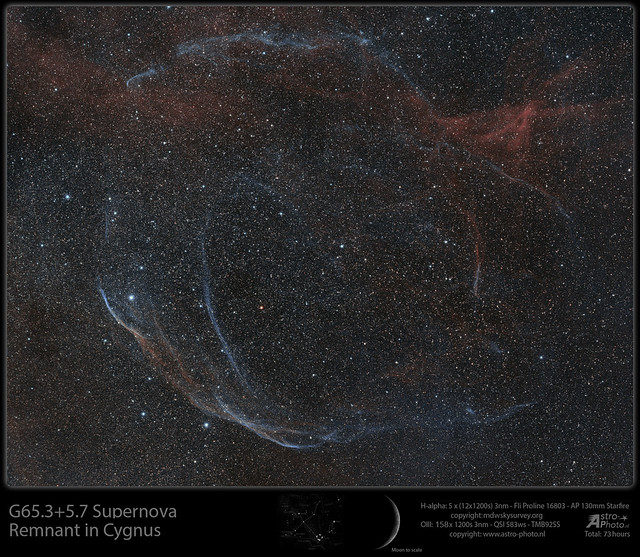 G65.3+5.7 Ha_OIII- bicolor
G65.3+5.7 Ha_OIII- bicolor by
Andre van der Hoeven, on Flickr
Credits: André van der Hoeven (astro-photo.nl) / MDW Sky Survey (mdwskysurvey.org) Processing: André van der Hoeven
Here is the result of my large summer-2018 project. I have been imaging this region for about 13 nights altogether between July and October 2018. You can call me crazy, using so many nights for just one object, in a region where clear nights are rare

But I really wanted to see if I could catch this beautiful Supernova remnant, and I'm glad it succeeded

Supernova remnants (SNR) are formed when a large star ends its life in a supernova explosion. About 300 of these remnants are currently known in our galaxy. One of the most famous remnants, the Veil Nebula, is located in the constellation of Cygnus. Although this is the most famous one in this constellation, it’s not the only SNR. Cygnus contains several obscure SNR’s, among which SNR 65.3+5.7 (also known as SNR 65.2+5.7).
SNR G65.3+5.7 was discovered by Gull et al. (1977) during an OIII survey of the Milky Way. Some parts of this SNR were already catalogued by Stewart Sharpless in his SH2 catalog as SH2-91, SH2-94 and SH2-96, but they were not recognized as being part of a bigger structure at that time. The idea that they could be part of a larger SNR was postulated by Sidney van den Bergh in 1960, but it took until 1977 for this to be confirmed.
This is one of the larger SNR in the sky spanning a region of roughly 4.0x3.3 degrees. Mavromatakis et al. (2002) determined the age of the SNR to be 20.000-25.000 years and the distance about 2.600 – 3.200 lightyears. The shell has a diameter of roughly 230 lightyears! This SNR is a predominantly OIII shell with also some H-alpha signal.
This supernova shell is quite weak and there are hardly any high-resolution images of this region. In the internet maybe 5-10 deep images of this shell can be found and, in most cases, they don’t cover the entire shell or the resolution is quite low because it was done by using photo lenses at short focal lengths. That’s why I decided to see if I could try to image the entire shell using my equipment, a TMB92 refractor in combination with a QSI583ws ccd camera. Because of its large size I needed to make a 3x3 mosaic to cover the whole region.
As so many nights were already necessary to cover the region in OIII I didn’t succeed in grabbing the H-alpha data, but on the internet I found the MDWsurvey (mdwskysurvey.org) initiated by David Mittelman (†), Dennis di Cicco, and Sean Walker (MDW). This is a marvelous project with the goal to image the entire northern sky in H-alpha at a resolution of 3.17”/pixel. I contacted them and told them of my effort to grab imagery of this SNR and they were very kind to provide me with the H-alpha imagery of this region, so that the entire SNR could be brought into view in reasonable high resolution.
This bicolor image shows a combination of about 53h of OIII data (made by myself) and 20 hours of Ha-data (made by the MDW survey) in a single image. In this way the full span of the shell can be seen in all its glory.
Image info:
H-alpha (astrodon 3nm, mdwskysurvey.org):
Telescope: Astro-physics AP130mm starfire
Camera: Fli Proline 16803
5 frames of 12x1200s each
OIII (astrodon 3nm):
Telescope: TMB92SS
Camera: QSI583ws
9 frames, 158 x 1200s total

